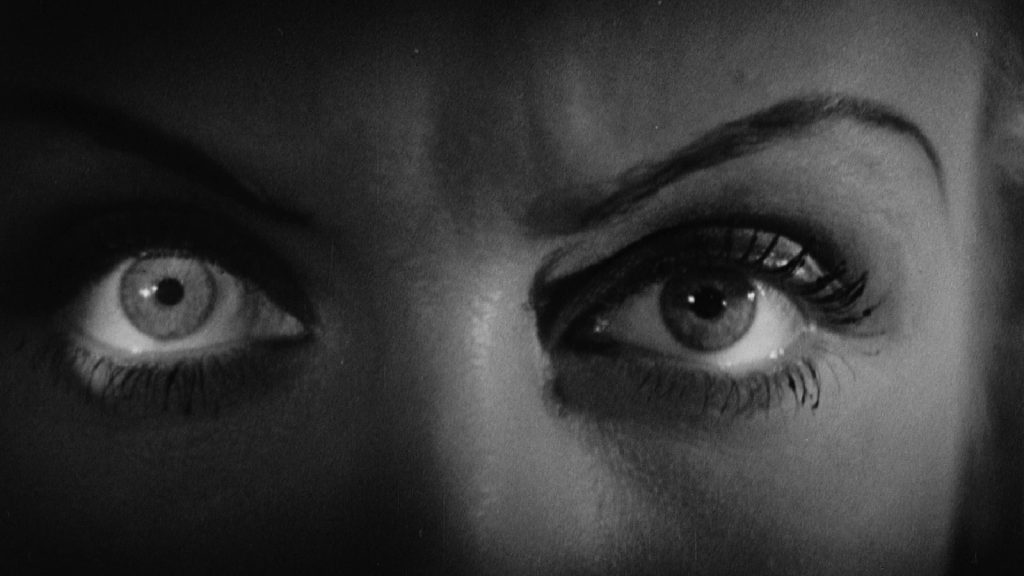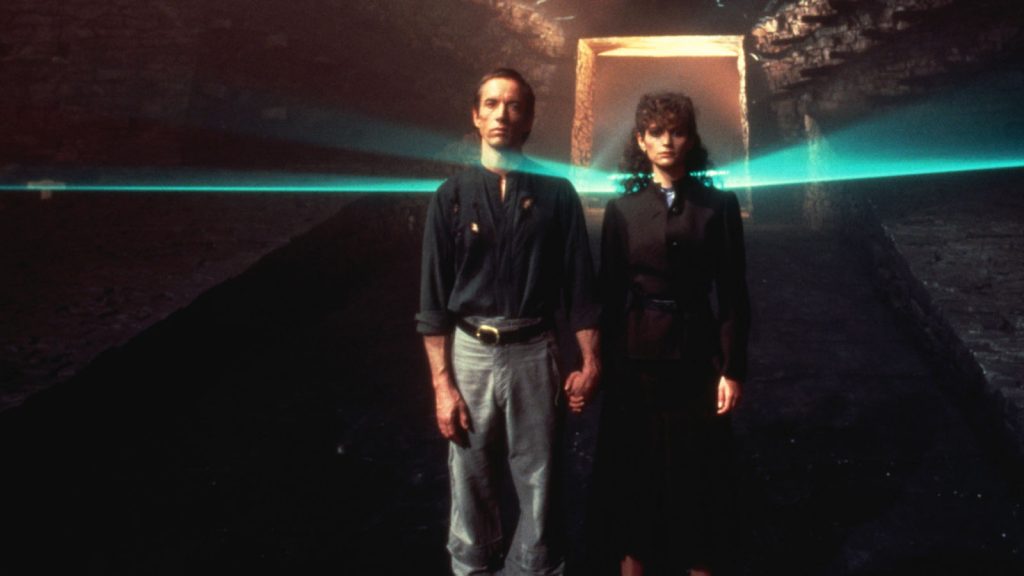
The rub for makers of American movie horror through the bulk of the 1950s was to make sure that their scares were couched in science fiction. This was the Atomic Age and if you weren’t dealing in its commodities and associations, you risked being thought of as somewhere back in the past. Creating horror with Gothic overtones was like asking someone to hang out up in the attic at grandma’s house with all of her old stuff when everyone else was out polishing the chrome on a hot new car.
This didn’t mean that the decade was marked by a dip in scares. New eras bring new threats. But fear is fear, both ancient and modern. A rocket ship could be a haunted house, and the unknown that we nonetheless know is out there as something or other, will unnerve the 80-year-old adult the same as the 8-year-old child, though perhaps for different reasons.
William Cameron Menzies’s Invaders from Mars (1953) is one of those films that gets written up as if it were merely a children’s picture. We do experience the film’s events through the eyes of David (Jimmy Hunt), a boy who happens to see a flying saucer land by the sandpits behind his home one night, but it’s telling how often the movie has been cited by those who saw it young as a terrifying benchmark of their childhood that stayed with them through adulthood.
An independent film made for National Pictures Corps., Invaders from Mars was shot in color, presumably to help it stand out from the sci-fi/horror fleet. The look of the film is striking. The palette might be described as melancholic, with the reds—a very important color during this era—akin to those that are seen to drain from cheeks. Here but not there, going and now gone.

That sandpit makes for one of the great haunting set pieces. David informs his scientist dad of what he’s seen, dad investigates, and things take a turn for the vampiric, with also a human-as-automaton element that would resurface in 1956’s Invasion of the Body Snatchers and 21st-century internet/iPhone culture, for that matter.
Watching people drop through the sandpits into the unknown below is like viewing the film of a ballet in reverse. These Orphic disappearances are all the more disturbing for how fluid they are. This is a brilliant coupling: the idea of the descent into the underworld and the grave, but also outer space at the same time. No wonder viewers were shaken up.
Sci-fi films set on Earth have a lot of daytime action. When there’s less of it—as with Edgar Ulmer’s The Man from Planet X (1951)—they can feel of a piece with the overt Gothic horrors. Invaders from Mars is distinctly tenebrific. It may not always be spooky nighttime in the movie, but that’s our sense.
Jokes have been made about the visible zippers on the backs of the Martians, but even the low costume budget works in the film’s favor. If you’re a child and you see a monster and it has vestiges of that which can be found in your closet, it’s as if all your fears that your mother dismissed as silly and baseless have been ratified. Invaders from Mars taps into the id and a childhood that stays with us until our death or maybe longer. After all, we don’t know any more about post-life next steps than David knows at first what is at the bottom of that sandpit, which probably isn’t a great thing to have in your backyard. 🩸

is the author of eight books, including the story collection, If You [ ]: Fabula, Fantasy, F**kery, Hope, a 33 1/3 volume on Sam Cooke’s Live at the Harlem Square Club, 1963, Meatheads Say the Realest Things: A Satirical (Short) Novel of the Last Bro, and a book about 1951’s Scrooge as the ultimate horror film. His work has appeared in Harper’s, The Atlantic, Rolling Stone, The New York Times, Vanity Fair, The Daily Beast, Cineaste, Film Comment, Sight and Sound, JazzTimes, The New Yorker, The Guardian, and many other venues. He’s completing a book called And the Skin Was Gone: Essays on Works of Horror Art. His website is colinfleminglit.com, where he maintains the Many Moments More journal, which, at 2.7 million words and counting as of autumn 2023, is the longest sustained work of literature in history.
Of the many recurring horror villains, Freddy Krueger is famously distinguished by his crispy face and razor claws, Jason Voorhees by his hockey mask and machete...
BY LAURA KERN | August 17, 2022
Planet of the Vampires is a film you haven’t seen at all if you haven’t seen it in the wee hours, with the lights off, and its hypnotic sound turned way up. This is Italian director Mario Bava’s Gothic haunted-house story...
BY TOM PHELAN | April 5, 2024
The way horror film series typically work is that the first entry is notable, for whatever reason...
BY COLIN FLEMING | October 31, 2023

This pre-Code offering packs a lot of story into its typically brisk running time, with several plot threads weaving together a (not always successful) tapestry of spooky and criminal doings.
READ MORE >
BY ANN OLSSON | Month 00, 2021

In what could be the fastest-resulting rape revenge movie, a drunken lout brutally forces himself on Ida, the young woman who doesn't return his affections, during a party over Labor Day.
READ MORE >
BY LAURA KERN | Month 00, 2021

Beast is a lot of movies in one package - fractured fairy tale, belated-coming-of-age story, psychological drama, regional horror film - but above all it's a calling card for its leading lady, Jessie Buckley.
READ MORE >
BY LAURA KERN | Month 00, 2021